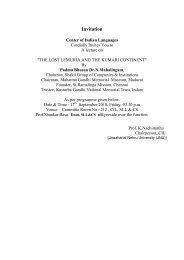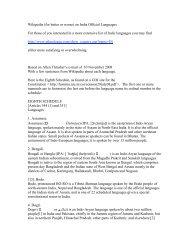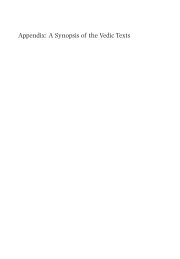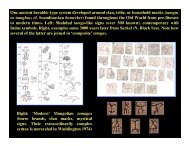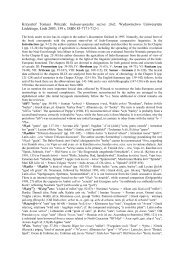1 Center for East European and Russian/Eurasian Studies The ...
1 Center for East European and Russian/Eurasian Studies The ...
1 Center for East European and Russian/Eurasian Studies The ...
- No tags were found...
You also want an ePaper? Increase the reach of your titles
YUMPU automatically turns print PDFs into web optimized ePapers that Google loves.
1725. <strong>The</strong> good storm god arrives to fight on the appointed resumptive date.26. His woman has advised him to strike first <strong>and</strong> treacherously.27. In either the first or second duel the enemy storm god fashions a chthonichelper to mimic the stony origin of the good storm god.28. <strong>The</strong> malevolent god called upon a chthonic figure to assist him.This helper proves useless because it lacks holy heat/fire.29. <strong>The</strong> chthonic helper is “cut down” with a sickle.30. In this portion of the battle the Storm God is, perhaps, wounded <strong>and</strong>acquires a fragment of that sickle as a lunate mark on his <strong>for</strong>ehead.31. A woman healer is unable to heal this distinctive wound.32. He is aided by an eagle, his daughter, who has stolen mead from a mountainwhere the god’s father dwells, perhaps the same mountain where the battle istaking place.33. He kills the evil storm god, despite the fact that the latter begs to begranted mercy.34. He flees in panic at his deed because he has killed kin, his earlier serpentfather or later a dragon cousin.35. He has also had to kill his own callow son, who has been crucial to hisfather’s victory, but who will not accept his father’s mercy extended to himon the field of battle (a mountaintop) because of honor.36. By killing a cousin,(perhaps earlier his father), he incurs the wrath of hismother or of a patron god(dess).37. He becomes pre-eminent <strong>and</strong> leads the warb<strong>and</strong> through the sky.VI. Conclusions1. <strong>The</strong> myth can be traced back to an ancient cultural zone that included PIE<strong>and</strong> much of the N(W)C.2. <strong>The</strong> myth is not of Hurrian or native Anatolian origin, as some (Watkins;Fortson) suggest, since the Hurrian lacks too many details.3. <strong>The</strong> Hurrian myth shows strong Middle <strong>East</strong>ern (Sumerian) influence,with some Indo-<strong>European</strong> elements from the old Mitannian Indo-Iranianaristocracy.(Klimov: Caucasus has old IE loans, IE *tepo- ≥ Old Georgian Teplisi



